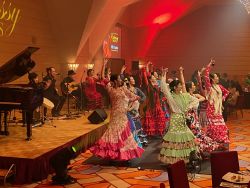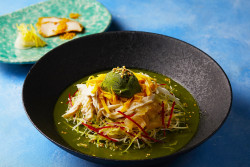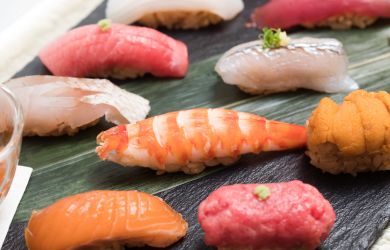
July 31, 2009
A Legacy of Emotion
Why do people care so much about the death of pro wrestler Mitsuharu Misawa?
By Metropolis
Originally published on metropolis.co.jp on July 2009
A somber shadow hung over the normally raucous fans of Pro Wrestling Noah at the big Tokyo show on June 22. Instead of heading straight for the merchandise tables and refreshment stands, we lined up to pay our respects to a legend of Japanese puroresu.
Mitsuharu Misawa had died in a wrestling ring in Hiroshima nine days earlier. A routine suplex maneuver caused a freak spinal injury to the 46-year-old who, according to colleagues, had been considering retirement within the year.
Before entering the auditorium, we passed a framed photograph of Misawa, a shrine to his memory. The table upon which it stood quickly filled with green and white flowers—his signature colors. Many fans were openly weeping.
I can see how this may be baffling to some. After all, wrestling is not a “real” sport and the matches are “fixed.” Why would a wrestler’s death attract so much attention from the Japanese media and cause such grief among the public?
Yes, it’s true, the outcomes are indeed predetermined. Wrestling is more akin to performance art than a sport. Yet these performers must grapple with a very real opponent: their audience. The true skill of a pro wrestler is measured by his ability to engage the passions of the crowd. If onlookers are engaged—rooting for their favorite, willing him not to give up as he takes a beating, cheering in elation as he makes a comeback—this counts as success, regardless of who wins the match.
In this way, Misawa was a master storyteller, taking his audience on journeys filled with highs and lows. Announcer Jim Ross once said that the core of wrestling was selling emotion, and Misawa could do this better than anyone.
Starting his career as a masked wrestler, Misawa impressed many with his skills, yet it wasn’t until he removed the mask in 1990 that a star was truly born. Wrestling under his own name, he connected with fans thanks to the qualities he conveyed: an air of genuine toughness, a gritty determination never to give up. Spectators found it easy to care about Misawa and root for their hero.
I remember my first Misawa match, one of his classic series against archrival Kenta Kobashi. After fighting for 40 minutes, Misawa’s chest was red from Kobashi’s devastating backhand chops, and my disbelief was completely suspended as I willed the battered champion to continue. Misawa overcame the odds twice, not just beating Kobashi but winning me over in the process. I was new to puroresu, didn’t speak Japanese, and didn’t know who Misawa was, yet still I was completely engaged.
Misawa was not widely known to Western audiences, yet his skill at engaging the crowd, at telling stories, inspired many of today’s wrestling greats. “I don’t think I could have been a bigger fan of the guy,” said WWE world champ C.M. Punk upon hearing of Misawa’s passing. (Punk wrestled the next night with Misawa’s name written on his ring gear as a sign of respect.) WWE superstar Chris Jericho described him as “a true warrior, one of my all-time favorite performers.”
Misawa commanded even greater respect among his Japanese colleagues. After his mentor, All Japan Pro Wrestling (AJPW) founder Giant Baba, died in 2000, Misawa became AJPW President. However, creative differences between him and Baba’s widow led the governing board to remove him. Shockingly, 90 percent of the wrestlers left AJPW with him. From this mass exodus emerged Pro Wrestling Noah, Misawa’s own company.
Through Noah, Misawa cultivated a new generation of stars. Younger performers and lightweights who did not get opportunities in AJPW found themselves in the Noah main event alongside seasoned veterans. This environment encouraged experimental and innovative styles, and has given Noah a reputation for cutting-edge wrestling.
People say that puroresu isn’t as popular as it used to be, but the public grief and mainstream coverage surrounding Misawa’s passing testify to an enduring affection for both the performer and his craft. Respected by his peers and adored by his fans, Misawa spent a career inspiring emotion. It is no surprise that his passing unleashed such passion.
Once we were seated in the hall, it was the wrestlers’ turn to pay their respects. Colleagues and friends marched solemnly to the ring carrying a photograph of Misawa. They gestured for a moment of silence. The wrestlers wore stony faces and sobs could be heard from the crowd. When the moment passed, Misawa’s picture was placed ringside, perhaps to symbolize that his spirit lives on in the company he created and the wrestlers he trained and inspired.
At the end of the show, fans had a final chance to remember Misawa. The ring was bathed in a green glow and his famous entrance music played. I found myself glancing toward the entry gate, wishing for him to appear. Green and white streamers filled the ring and the crowd chanted his name one last time.








